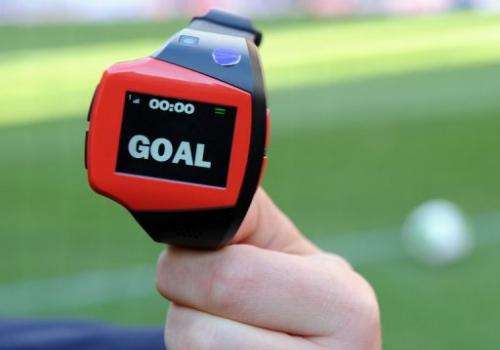Science keeps its eye on the (foot) ball

Science has entered the debate into the use of goal-line technology in football, with an article in a respected journal on Wednesday stressing it could not be foolproof.
It was misleading to promise fans that the technology would eliminate errors like the denial of an apparently legitimate goal by England midfielder Frank Lampard in the 2010 World Cup, said the piece in Nature.
Goal-line technology will be introduced to the Confederations Cup tournament in Brazil next month, followed by the English Premier League in August.
The technology typically works with several cameras tracking the ball and sending a signal to match officials when it crosses the line.
Similar systems are already used in tennis and cricket.
"The introduction of goal-line technology to football is likely to perpetrate a mass deception on television viewers," science journalist and self-proclaimed Sheffield United fan Nic Fleming wrote in Nature—a journal better known for publishing scientific breakthroughs in fields like astronomy, particle physics and neuroscience.
Many people would believe they were seeing an accurate, real-time snapshot of what happened, when in fact the images are a computer reconstruction of an array of two-dimensional pictures, he said.
"The technology is almost certainly better than human referees, however the crucial point is that they are not and cannot be 100 percent accurate," Fleming told AFP.
"They will still sometimes get it wrong, even if only occasionally."
He argued for a disclaimer on the graphics so that people will understand there was a scientific margin of error to consider.
"This would help people gain a clearer understanding that science is usually based on probabilities, not definitive answers," he said.
"Based on this we could have much better discussions about the role of science in public debates around climate change, nuclear power and genetic modification, for example."
After years of debate, trials and several refereeing controversies, FIFA finally succumbed to pressure last year and gave the thumbs up to the introduction of goal-line technology.
The Confederations Cup will be the second FIFA-accredited competition in which the technology will be used to determine disputed goal-line incidents.
It was made available in last year's Club World Cup in Japan, albeit without ever having to intervene.
Journal information: Nature
© 2013 AFP


















